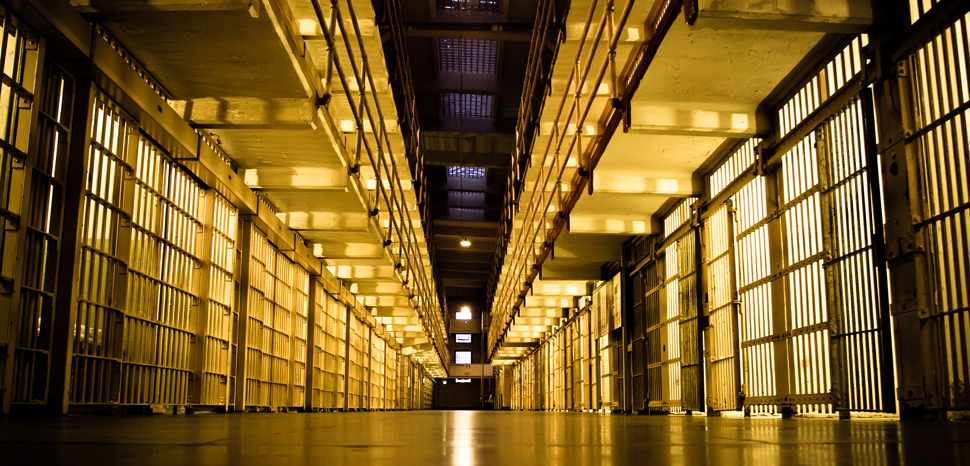According to a recent report by the Innocence Project, as many as 1% of the U.S. prison population at any given time is falsely imprisoned. While that number may seem insignificant on the surface, further analysis reveals a startlingly grim reality. If accurate, it means 20,000 Americans since 1980 have been wrongly incarcerated for crimes they did not commit. That’s 20,000 sons, daughters, mothers, and fathers who lost critical parts of their lives because of the failures of the U.S. system. The stories they tell are as chilling as they are shocking, and unfortunately, it can take a lifetime for justice to be carried out.
In April of 1976, 20-year-old African-America cement worker Ronnie Long was accused of raping Sarah Bost, a 54-year-old resident of Cabarrus County, North Carolina. The case was incredibly weak to say the least, as no DNA evidence ever linked Long to the crime, and in fact, Bost herself initially described her assailant as, “light-skinned.” Nevertheless, the all-white jury, which had originated from a county that was 20% black, had seemingly already made up their minds that Long was the culprit. In an incredible display of judicial maleficence, Long was convicted to life in prison. It would take 44-years of appeals and a pardon from Governor Roy Cooper before his release in 2020. At a time when most young men are just mapping out their future, Long’s was ripped from him.
“Everything that transpired to put me behind bars was intentional,” Long told CNN. “It needs to be addressed because if it happens to me it can happen to you”. Long’s story is one out of the thousands who have been victims of an overly aggressive, and at times nefarious, U.S. justice system largely influenced by the politics of ‘tough on crime’ political marketing. In addition to the wrongful convictions, thousands of American citizens currently languish in our prisons, many of them non-violent, convicted on archaic sentencing laws from a system that executes justice as if it was still the 1990s.
The history of these out-of-date policies is easy to track. In 1986, Congress passed the Anti-Drug Abuse Act, which drastically increased funds for the prison system and established mandatory sentencing laws for possession of narcotics. In 1994, President Bill Clinton signed the Violent Crime Control and Law Enforcement Act, which created the infamous three-strikes policy and even further inflated the budget of the prison system. And in 2003, Congress expanded the 40-year mandatory sentencing procedure. The result of these antipathetic and impractical policies is appalling.
Today, half a million people sit in jail cells without being convicted of any crime, usually because they are unable to pay the $10,000 median bail for felonies. This issue is so common that research has shown that 75% of the United States prison population at any given time are incarcerated without being charged with any crime. Over 120,000 people are in federal prisons for non-violent drug-related crimes, with 60,000 in state prisons under the same circumstances. 45,000 are in state prisons for mere drug possession.
The cruelest element of this national issue isn’t a lack of any solution. On the contrary, it’s the fact that we’ve been staring at several solutions for decades but we’ve ignored them. For years our leaders have opposed criminal justice reform in a selfish, politically expedient effort to prove their law-and-order credentials.
The most famous example of this was in the 1988 presidential election when Republican Vice-President George H. W. Bush viciously attacked Massachusetts Governor Mike Dukakis over his state’s furlough program which was designed to give inmates a second chance at civilian life. The attack came in the form of an advertisement that targeted a scandal that had come out of Dukakis’s program. In a tragic event before the campaign, one of the criminals who were part of the program, an African-American male named Willie Horton, raped a white woman and murdered her husband.
The Bush campaign, down 17 points in national polls, aired the ad in prominently middle-class white media markets showing Horton’s mugshot as an ominous voice accused Dukakis of being soft on crime. Of course, it didn’t matter that the program was largely successful and helped rehabilitate hundreds of former inmates. The ad, while controversial, proved extremely effective.
The strategy worked and Bush’s campaign reversed the tide and won by a landslide. Long after the campaign ended, politicians took notice of how potent the attack was, and ever since it has been replicated several times.
These political tactics become addictive to the men and women in power who make policy. And policy, created out of bad faith and the desperation to remain in power, can damage lives. Those who are lucky enough to escape this politically motivated cycle of incarceration can provide a valuable perspective that, sadly, remains criminally underutilized.
Sadly, despite paying the price society has deemed appropriate for their crime once they are set free, the struggle doesn’t seem to let up. Even when it comes to things as basic as civil rights due for every American. In 2020, an estimated 5.17 million people were unable to vote because of a prior felony. That includes 1 in every 16 African-Americans over 18, and 560,000 Latino Americans.
It is the moral responsibility of this nation, one built on second chances, to give leniency to non-violent offenders and decriminalize victimless crimes. It is unacceptable that our system is filled with thousands of individuals wrongfully convicted and serving time illegally. It is unacceptable that lives across America have been ruined because of simple, one-time mistakes. As Americans, we must push our leaders to do better and hold them accountable for injustice.
This isn’t a political issue; it’s a human one. When a man’s life is destroyed as punishment for a crime in his youth that he fully regrets, we all pay the price. Secluded from society, and many times unable to find a job or housing because of his prior conviction, he is more likely to fall back into his old ways. We have created for ourselves an environment of criminal repetition, and while crime statistics may rise and fall each year, the impact of our self-righteous and inhumane standards for these individuals remains constant.
The views expressed in this article are those of the authors alone and do not necessarily reflect those of Geopoliticalmonitor.com




